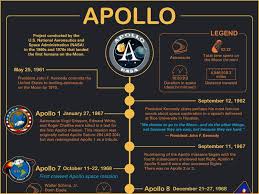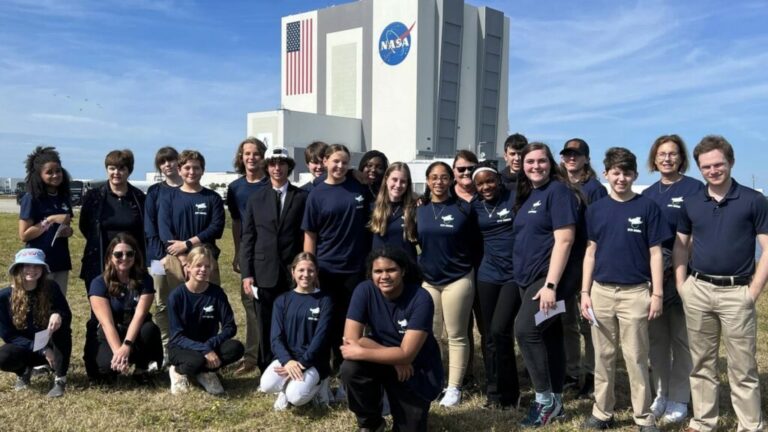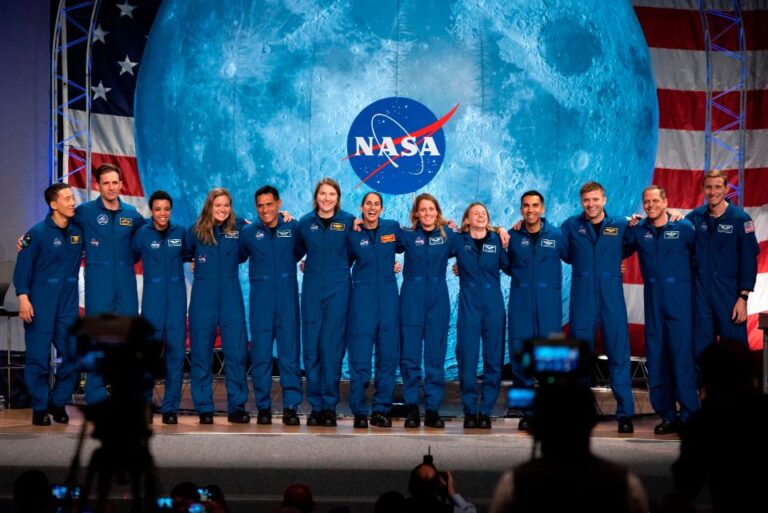
The Apollo program is one of the most significant achievements in human history, representing NASA’s effort to land humans on the Moon and safely return them to Earth. Running from 1961 to 1972, the program not only achieved the historic Apollo 11 landing in 1969 but also led to five more successful manned Moon landings. However, despite its unprecedented success, the Apollo program was eventually canceled, leaving many to wonder what happened to NASA’s lunar ambitions. This article will explore the rise, success, and eventual end of the Apollo program, along with the factors that led to its conclusion.
1. Origins and Objectives of the Apollo Program
The Apollo program was born in the early 1960s during the height of the Cold War, fueled by the intense rivalry between the United States and the Soviet Union, known as the Space Race. After the Soviets successfully launched Sputnik, the world’s first artificial satellite, in 1957 and sent the first human, Yuri Gagarin, into space in 1961, the U.S. felt the pressure to assert its technological superiority.
In response, President John F. Kennedy announced a bold goal in a 1961 speech to Congress, calling for the U.S. to land a man on the Moon and return him safely to Earth by the end of the decade. This ambitious goal became the foundation of the Apollo program, named after the Greek god Apollo, symbolizing light and knowledge.
2. The Successes of the Apollo Program
NASA’s Apollo program is best known for the following landmark missions:
Apollo 11 (1969) – The First Manned Moon Landing
On July 20, 1969, Apollo 11 made history when astronauts Neil Armstrong and Buzz Aldrin became the first humans to walk on the Moon, while Michael Collins orbited above in the command module. Armstrong’s famous words, “That’s one small step for man, one giant leap for mankind,” became synonymous with human achievement.
Subsequent Apollo Landings
Following the success of Apollo 11, NASA conducted six more manned missions to the Moon between 1969 and 1972, five of which successfully landed:
- Apollo 12 (1969) – The second successful landing.
- Apollo 13 (1970) – The infamous mission that experienced an oxygen tank explosion, preventing a Moon landing but returning the crew safely to Earth.
- Apollo 14 (1971) – A successful Moon landing following Apollo 13’s near-disaster.
- Apollo 15 (1971), Apollo 16 (1972), and Apollo 17 (1972) – The final successful lunar missions, with Apollo 17 marking the last human visit to the Moon.
Each mission contributed valuable scientific knowledge about the Moon’s surface, composition, and environment. The Apollo program also saw advancements in space technology, including the development of the Lunar Module, the Saturn V rocket, and the use of the Lunar Roving Vehicle.
3. Why the Apollo Program Ended
Despite its monumental achievements, the Apollo program was cut short for several reasons, primarily financial, political, and practical concerns.
1. Financial Constraints
The Apollo program was expensive. It cost the U.S. government around $25 billion at the time (over $150 billion today when adjusted for inflation). While the Moon landings were a source of national pride and demonstrated U.S. technological superiority, they offered little immediate economic return. By the early 1970s, the U.S. was facing rising costs from the Vietnam War and domestic programs, such as President Lyndon B. Johnson’s Great Society initiative, which aimed to reduce poverty and promote civil rights.
Congress became less willing to allocate such large sums of money to space exploration, especially since the U.S. had already achieved its primary goal: landing on the Moon. The high costs of continuing the Apollo missions, coupled with other national financial pressures, made the program a target for budget cuts.
2. Waning Public and Political Interest
In the early 1960s, the Space Race was a central issue in U.S. politics, with the public and government heavily invested in the outcome. The Apollo 11 landing was celebrated worldwide, and subsequent missions were seen as important milestones. However, as the novelty of Moon landings wore off, public interest began to wane.
After the success of Apollo 11, the following missions received less attention from the public, and the thrill of human space exploration shifted to other space programs, such as those involving satellite launches and robotic exploration of planets like Mars. Political leaders also began to lose interest in continuing costly Moon landings, as the Cold War competition shifted to other areas.
3. Lack of Clear Future Goals
Once the goal of landing on the Moon had been accomplished, NASA and the U.S. government faced a question: What’s next? There were discussions about expanding lunar exploration, establishing permanent bases on the Moon, or sending humans to Mars, but these were long-term, highly expensive goals.
There was no immediate successor to the Apollo program, and without a clear next step, there was little political will to continue funding additional Moon landings.
4. Focus Shifts to Other Space Initiatives
NASA’s focus shifted to other space programs following Apollo. The Space Shuttle program, which aimed to make space travel more routine and cost-effective, became a priority. The shuttle program began development in the 1970s, with its first launch occurring in 1981.
Additionally, NASA invested in robotic space exploration, such as the Viking missions to Mars, which provided detailed images and data about the Red Planet. The development of the Skylab space station in the 1970s and the eventual creation of the International Space Station (ISS) also took precedence.
4. The Legacy of the Apollo Program
While the Apollo program ended, its legacy remains profound. It inspired generations of scientists, engineers, and explorers, showing that humans could achieve seemingly impossible goals through ingenuity and determination. The scientific data collected from the Moon continues to provide insights into lunar geology and the history of the solar system.
The Apollo program also set the stage for international cooperation in space exploration, leading to programs like the ISS and future Mars missions. Many of the technologies developed during Apollo, such as computer systems, materials science, and telecommunications, have had long-lasting impacts on a wide range of industries.
5. The Artemis Program: A New Era of Lunar Exploration
Although NASA’s manned lunar missions ended in 1972, interest in returning to the Moon has been revived in recent years. NASA’s Artemis program aims to return astronauts to the lunar surface by the mid-2020s. Unlike Apollo, which focused on short-term visits, Artemis is designed to establish a sustainable human presence on the Moon, paving the way for future exploration of Mars.
International partnerships and private companies, such as SpaceX, are playing a significant role in these efforts, indicating a new era of lunar exploration that builds on the foundation laid by the Apollo program.
Conclusion
NASA’s Apollo program was one of the most remarkable achievements in the history of human exploration, culminating in six successful Moon landings between 1969 and 1972. However, due to financial constraints, shifting political priorities, and waning public interest, the program was brought to an end. Despite its conclusion, Apollo’s legacy lives on in the technologies it developed, the scientific knowledge it uncovered, and the inspiration it continues to provide to future generations of space explorers. With NASA’s Artemis program, the dream of returning to the Moon is once again within reach, marking the continuation of humanity’s journey beyond Earth.








Receive your no-cost backlink analysis now!
https://aluzzion.com/go/free-backlink-analysis-tool-for-seo
Dive into a detailed SEO backlink analysis now to fortify your digital strategy! Think of it as checking the backbone of your online presence for health and growth. Discover the trust your site possesses, and transform your backlink profile into a roadmap for higher search engine rankings and increased traffic. Detect unwanted links to eliminate and seize opportunities for strong link-building.
This allows for multiple variations of the message while maintaining clarity and intent.
You can unsubscribe by sending an email with subject “Unsubscribe” to hortzsteven@gmail.com
Norra Backebo 63, Thousand Oaks, CA, US